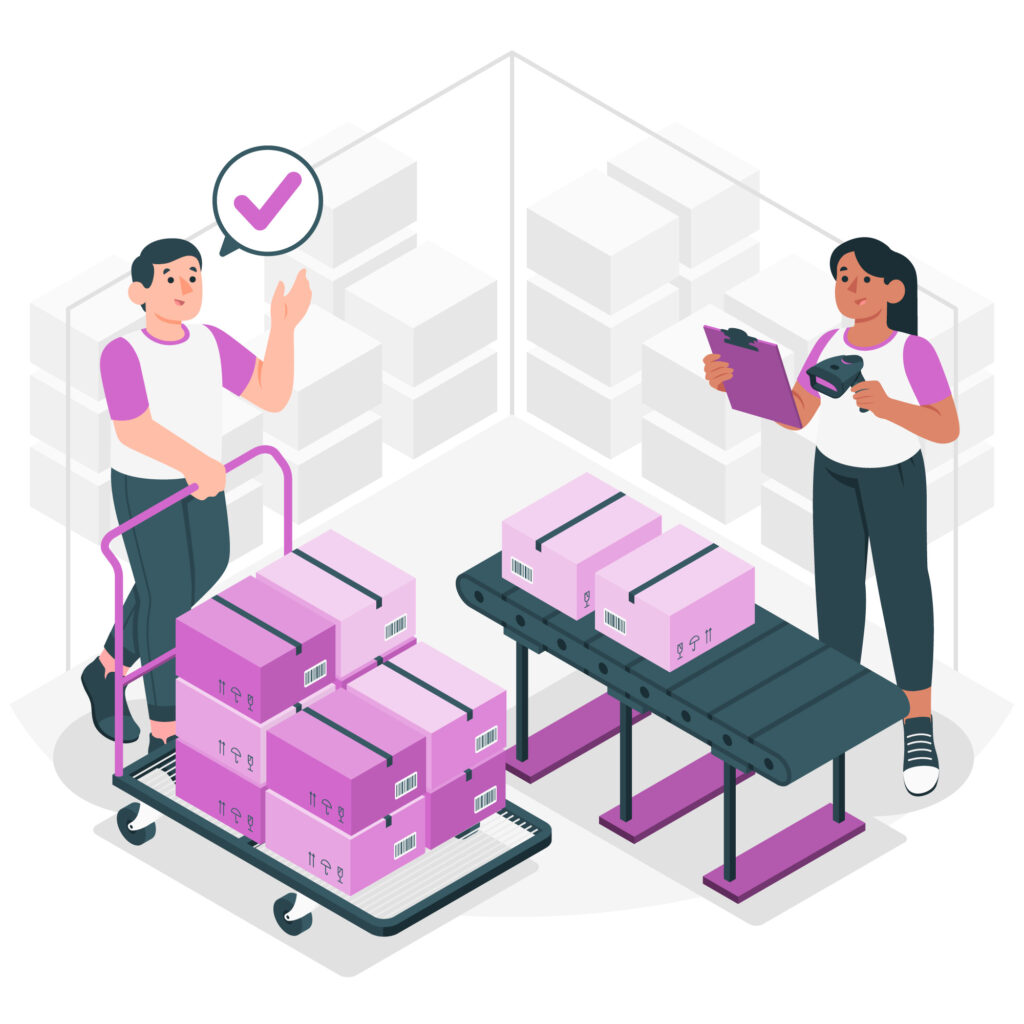Effective inventory management is the backbone of any successful e-commerce business. Without the right inventory setup, you risk stockouts, overstocking, and dissatisfied customers, all of which can harm your bottom line. As your e-commerce business grows, implementing the right inventory setup becomes increasingly critical to maintaining efficiency and profitability. In this blog post, we’ll explore the key inventory setups for e-commerce, the benefits of each, and how to choose the best one for your business.
Why Inventory Management Matters in E-commerce
Inventory management involves tracking and controlling your stock levels to ensure you have the right amount of product available to meet customer demand. For e-commerce businesses, where competition is fierce and customer expectations are high, efficient inventory management is essential for several reasons:
– Customer Satisfaction: Ensuring that products are in stock and delivered on time is crucial for customer satisfaction and repeat business.
– Cost Control: Effective inventory management helps you avoid overstocking, which ties up capital and increases storage costs, and stockouts, which can lead to lost sales and disappointed customers.
– Scalability: As your business grows, a well-organied inventory system allows you to scale your operations without losing control of your stock.
Key Inventory Setups for E-commerce
There are several inventory setups that e-commerce businesses can implement, each with its own advantages depending on the size, nature, and goals of your business. Here are the most common setups:
- In-House Inventory Management
– How It Works: In-house inventory management involves storing and managing all your stock within your own facilities. You are responsible for all aspects of inventory control, from receiving shipments to picking, packing, and shipping orders.
– Benefits:
– Complete Control: You have full control over your stock levels, storage conditions, and order fulfillment processes.
– Customiation: You can customie your packaging and delivery processes to enhance the customer experience.
– Cost Savings: If you have the space and resources, managing inventory in-house can save costs associated with third-party logistics (3PL) providers.
– Challenges:
– Resource-Intensive: Managing inventory in-house requires significant investment in warehouse space, staff, and technology.
– Scalability: As your business grows, managing larger volumes of stock can become challenging without additional resources.
- Third-Party Logistics (3PL) Providers
– How It Works: A third-party logistics provider manages your inventory and order fulfillment on your behalf. They handle receiving, storing, picking, packing, and shipping your products from their facilities.
– Benefits:
– Scalability: 3PL providers offer scalable solutions, allowing you to expand your operations without worrying about warehouse space or staffing.
– Expertise: 3PL companies have expertise in logistics, ensuring efficient and accurate order fulfillment.
– Global Reach: Many 3PL providers have a global network of warehouses, enabling faster shipping and lower costs for international orders.
– Challenges:
– Less Control: You have less direct control over your inventory and fulfillment processes, which can impact the customer experience.
– Cost: While 3PL providers can save costs in some areas, their services come with fees that can add up, especially for small businesses.
- Dropshipping
– How It Works: Dropshipping allows you to sell products without holding any inventory. When a customer places an order, the supplier ships the product directly to the customer. You act as the intermediary between the customer and the supplier.
– Benefits:
– Low Risk: Dropshipping eliminates the need for upfront investment in inventory, making it a low-risk option for new or small businesses.
– Wide Product Range: You can offer a wide variety of products without the need to stock them, allowing for greater flexibility.
– Easy to Start: Dropshipping is relatively easy to set up, with minimal upfront costs and no need for warehouse space.
– Challenges:
– Lower Margins: Profit margins can be lower due to the additional costs charged by suppliers for handling and shipping.
– Limited Control: You have little control over the quality of products, shipping times, or inventory levels, which can affect customer satisfaction.
– Supplier Reliability: Your business relies heavily on the reliability of your suppliers. Any issues on their end can directly impact your customers.
- Hybrid Inventory Management
– How It Works: A hybrid inventory setup combines in-house management with third-party logistics or dropshipping. For example, you may handle high-demand products in-house while outsourcing slower-moving items to a 3PL provider or dropshipper.
– Benefits:
– Flexibility: A hybrid approach allows you to maintain control over certain products while outsourcing others, providing a balance between control and scalability.
– Cost Efficiency: By managing high-margin or fast-moving items in-house and outsourcing the rest, you can optimie costs.
– Risk Mitigation: Diversifying your inventory management strategy reduces the risk of relying too heavily on one method, protecting your business from disruptions.
– Challenges:
– Complexity: Managing multiple inventory systems requires careful coordination and can complicate order fulfillment.
– Integration: Ensuring seamless integration between in-house systems and third-party providers is crucial for maintaining efficiency and avoiding errors.
Technology and Tools for Inventory Management
Regardless of the inventory setup you choose, technology plays a crucial role in ensuring smooth and efficient operations. Here are some essential tools and technologies for e-commerce inventory management:
- Inventory Management Software (IMS):
– Features: IMS solutions offer real-time tracking of stock levels, automated reordering, and inventory forecasting. They help prevent stockouts and overstocking by providing insights into inventory trends.
– Integration: Choose an IMS that integrates with your e-commerce platform, warehouse management system, and accounting software for seamless operations.
- Warehouse Management Systems (WMS):
– Features: WMS solutions optimie the physical movement of goods within your warehouse. They assist with picking, packing, shipping, and inventory control, improving accuracy and efficiency.
– Automation: Advanced WMS solutions may include automation features such as barcode scanning, automated storage and retrieval systems, and robotics.
- Order Management Systems (OMS):
– Features: An OMS centralies order processing, allowing you to manage orders from multiple sales channels in one place. It helps streamline order fulfillment and improve customer satisfaction.
– Real-Time Updates: OMS tools provide real-time updates on order status, inventory levels, and shipping information, ensuring transparency and accuracy.
- Demand Forecasting Tools:
– Features: These tools use historical data, market trends, and seasonal patterns to predict future demand. Accurate forecasting helps you maintain optimal inventory levels and reduce the risk of stockouts or excess stock.
- Multi-Channel Inventory Management:
– Features: If you sell on multiple platforms (e.g., your website, Amazon, eBay), multi-channel inventory management tools help you keep track of inventory across all channels, preventing overselling and ensuring consistent stock availability.
Best Practices for E-commerce Inventory Management
- Regular Audits: Conduct regular inventory audits to ensure your physical stock matches your records. This helps identify discrepancies and prevent stock issues.
- Safety Stock: Maintain a safety stock of critical items to buffer against unexpected demand spikes or supply chain disruptions.
- ABC Analysis: Use ABC analysis to categorie your inventory based on value and turnover rate. Focus on managing high-value, fast-moving items (Category A) more closely than lower-value, slow-moving items (Categories B and C).
- Supplier Relationships: Build strong relationships with reliable suppliers. Clear communication and strong partnerships can help you manage lead times, negotiate better terms, and ensure consistent stock levels.
- Scalability Planning: As your business grows, plan for scalability by investing in technology, expanding warehouse space, or partnering with 3PL providers to handle increased volumes.
Conclusion
Choosing the right inventory setup for your e-commerce business is a critical decision that can impact your efficiency, customer satisfaction, and profitability. Whether you opt for in-house management, third-party logistics, dropshipping, or a hybrid approach, understanding the benefits and challenges of each setup is key to making an informed choice. By leveraging the right technology and implementing best practices, you can optimie your inventory management and set your e-commerce business up for long-term success.







